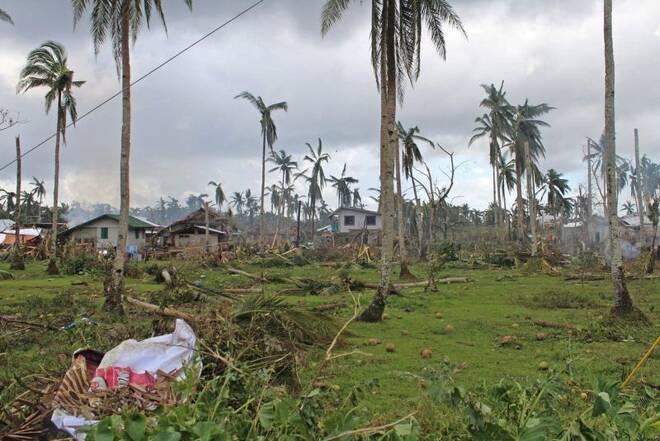Advertisement
Advertisement
Philippines grapples with typhoon aftermath as death toll tops 300
By:
MANILA (Reuters) - The death toll in the Philippines after Typhoon Rai, the strongest storm to hit the country this year, slammed into central and southern provinces has risen to 208, the national police spokesperson said on Monday.
By Karen Lema and Enrico Dela Cruz
MANILA (Reuters) – More than 300 people have been in killed by a powerful typhoon in the Philippines that destroyed homes, flooded towns, severed power and communications lines and displaced hundreds of thousands in its central and southern regions.
Military airplanes and naval vessels were dispatched on Monday to carry aid to areas devastated by Typhoon Rai, as the country grappled with the strongest of 15 such storms to hit the archipelago this year.
“We are still assessing the damage, but it is huge,” Defense Secretary Delfin Lorenzana told reporters on Monday. “The first thing we are doing is address the food and water (supplies) and medical care of the injured.”
Lorenzana told the armed forces to deliver relief goods using all available assets, and send in more troops if necessary.
The number of storm-related deaths climbed throughout Monday as rescue efforts continued in hard-hit areas.
As of 1000 GMT, the death toll from Rai has risen to 375, the police said in a report, making it one of the deadliest typhoons to have struck the Southeast Asian nation. The number of injured has climbed to 500, while 56 people were missing.
The count, which according to the police was subject to validation, far outstripped the 58 deaths recorded by the national disaster agency, which said it was still checking reports from affected areas.
The majority of the deaths reported by police were in the central region of Visayas, home to dive spots in Bohol province, among some of the most popular tourist destinations, and the Caraga region in northeastern Mindanao.
Provincial governor Arthur Yap told broadcaster CNN Philippines he feared the death toll could rise further, as a lack of mobile telephone links made it hard to gather information.
Rai, which made landfall as a category 5 typhoon on Thursday, revived memories of the devastation brought in 2013 by Typhoon Haiyan, one of the most powerful tropical cyclones ever recorded, which killed 6,300 people in the Philippines.
Rai displaced nearly 490,000 people in the Philippines before moving toward the South China Sea over the weekend.
It left a trail of destruction in the provinces of Cebu, Leyte, and Surigao del Norte, including Siargao, which is popular with surfers, and the Dinagat Islands.
President Rodrigo Duterte, who visited typhoon-stricken areas over the weekend, promised funds of about 2 billion pesos ($40 million) to help in recovery efforts.
(Reporting by Enrico Dela Cruz and Karen Lema; Editing by Ed Davies and Clarence Fernandez and John Geddie)
About the Author
Reuterscontributor
Reuters, the news and media division of Thomson Reuters, is the world’s largest international multimedia news provider reaching more than one billion people every day. Reuters provides trusted business, financial, national, and international news to professionals via Thomson Reuters desktops, the world's media organizations, and directly to consumers at Reuters.com and via Reuters TV. Learn more about Thomson Reuters products:
Did you find this article useful?
Latest news and analysis
Advertisement
